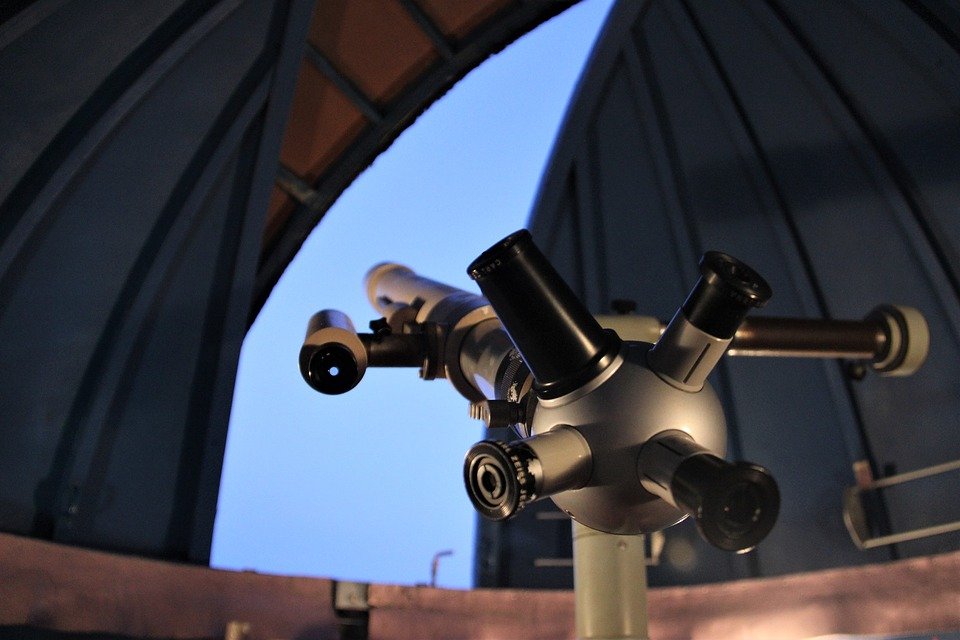Since the invention of the first optical instruments in the early 17 century, inventors have developed many different types of telescopes. It was always about improving the optical performance. But regardless of whether it was telescopes or binoculars which they were trying to improve, they all work according to the same optical principles of refraction and reflection. However, the different types of telescopes for amateur astronomers can be divided into three different categories.
- Refractors- telescopes with lenses
- Reflectors – telescopes with mirrors
- Catadioptric – telescopes using lenses and mirrors
Different Kinds of Telescopes
Even the types of telescopes may vary in design and build, they all collect light and focus it for the purpose of creating a magnified image of a distant object. Different kinds of telescopes have different observation qualities as light behaves differently whether it is refracted through a lens or reflected by a mirror.
Refractor Telescopes
The refractor telescope is what comes to people’s mind first when talking about telescopes. It is a long tube with a lens (objective lens) at the front end, which is to be pointed in the direction of the desired object, and a small lens (ocular lens) at the other end to look into. Invented in the early 17-century, refractor telescopes were the first kind of telescopes. The first to point it to the night sky was Galileo Galilei one of the founders of modern science.
In a refractor telescope, the incoming light beam is bundled and refracted by the lens. This causes the light to be split into colors like red, green, blue. Different colors have different wavelengths and therefore a different focus on the optical axis. This is called chromatic aberration, the effect will be visible as a small rainbowlike color space around the star you observing. To be eliminated it needs an elaborate lens construction and various glass coatings. This is what pushes the price of refractor telescopes. The effect becomes less the longer the focal point of the objective lens is.
What are the advantages and disadvantages of a lens telescope?
Advantages
- no central shading (obstruction)
- high image quality and high contrast
- little maintenance as it is a closed optical system
Through the unobstructed beam path, the refractor is ideally suited for observation of the sun, moon, twin stars, and planets.
Disadvantage
- Chromatic aberration (color error)
- Partially long sizes (tube)
- very expensive with increasing aperture
Small refractor telescopes with good lenses and an aperture of up to 3 to 4 inches are great tools and are superior to small mirrors in every respect. But anything with lenses of more than 5 inches is out of a rational cost-benefit ratio for amateur astronomers. Better than to invest in:
Reflector Telescopes
This type of telescope uses mirrors instead of lenses in order to gather and focus light. The most common here is Isaac Newton’s Newtonian reflector which uses a concave primary mirror at the bottom end of the telescope and a small secondary mirror at the top end that projects the beam to an eyepiece.
The light beam is thus not refracted in comparison to the refractor, as a result, the image does not suffer from color aberration. However, in the beam path, the secondary mirror causes an obstruction which has an effect on the contrast.
What are the advantages and disadvantages of reflector telescopes?
Advantages
- no aberration (free of color defects)
- large aperture – high light-gathering power
- short design against refractors
- very cheap in the purchase
Reflection telescopes have a variety of associated advantages including the fact that they do not cause chromatic aberration. These telescopes are also much cheaper to build, especially in large sizes. Furthermore, mounting the mirrors is easy as the entire back surface is free for use as an attachment to the mount.
Disadvantage
- obstructed beam path (= slightly contrast-reducing)
- requires maintenance and culmination to avoid:
- off-axis image errors (coma, astigmatism, image field curvature)
Reflector telescopes allow high apertures and gather plenty of light. When well-made and well-maintained, the reflector can provide a sharp, contrasting image for all forms of celestial objects for a fraction of the cost of an equal aperture refractor.
Catadioptric Telescopes
A Catadioptric telescope also knows as a Compound telescope uses reflecting and refracting elements to produce an image. This clever combination of mirrors and lenses uses the advantages of reflection and refraction to combine their individual benefits in one instrument.
There is quite a number of different designs of catadioptric telescopes. They all differ slightly in the lights beam path and the number of lenses or mirrors used. Each having its respective advantage over the other depending on the purpose they build for.
So even the catadioptric telescopes come with a number of advantages, there are also a couple of disadvantages.
Advantages of compound telescopes
- compact build, shorter than the actual focal length
- no chromatic aberration
- no diffraction phenomena
- portable, as comparatively compact design
- high image quality
- suitable for viewing terrestrial objects
Disadvantages of Compound telescopes
- obstruction in the beam path reduces contrast
- reduced brightness because of the secondary mirror
- requires maintenance and culmination or mirrors
- needs time for ambient temperature adjustment
- expensive
Possessing both, the characteristics of the refractor and reflector make the catadioptric telescope a good choice for the hobby astronomer that wants a versatile instrument to observe planets and stars as well as dim objects such as star clusters and galaxies.



